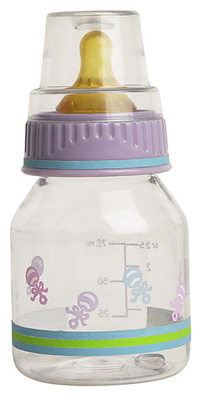April 29, 2008 - By Krista Conger
Bisphenol A is a component of polycarbonate plastic and epoxy resin. Epoxy resins are used to coat metal food cans and bottle tops. Polycarbonate is often used in reusable food and drink containers and in many popular brands of baby bottles, as well as in impact-resistant safety equipment and some medical equipment. Two other common types of plastic that don't contain bisphenol A, polypropylene and polyethylene, are typically cloudy and soft. According to the National Institute of Environmental Health Sciences, the estimated production of bisphenol A in the United States in 2004 was approximately 2.3 billion pounds, most of which was used in polycarbonate plastics and resins.

If you'd like to reduce your exposure to bisphenol A:
Steer clear of hard, clear containers, or those labeled with the recycling number 7, some of which contain bisphenol A. Containers labeled with the recycling number 5 are made from polypropylene, while those labeled with the numbers 1, 2 or 4 are made from polyethylene. When in doubt, call the manufacturer.
Avoid microwaving plastic containers or washing them in the dishwasher. Heat and alkali detergent can increase the likelihood of leaching.
Use glass, porcelain or stainless steel containers when possible.
Limit your consumption of canned goods.
Look for products labeled bisphenol A, or BPA, free.
More information about the scientific debate around the potential human health effects of bisphenol A can be found at the Web sites for the National Institute of Environmental Health Sciences (www.niehs.nih.gov) or the National Toxicology Program (ntp.niehs.nih.gov).
About Stanford Medicine
Stanford Medicine is an integrated academic health system comprising the Stanford School of Medicine and adult and pediatric health care delivery systems. Together, they harness the full potential of biomedicine through collaborative research, education and clinical care for patients. For more information, please visit med.stanford.edu.